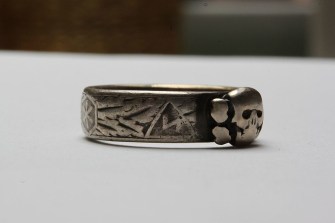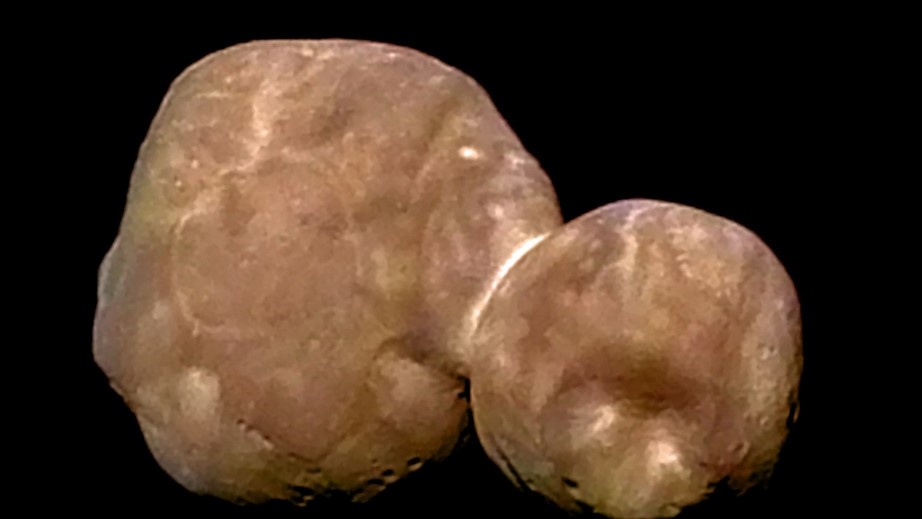The Nazis’ love affair with the occult

Photo by © CORBIS/Corbis via Getty Images)
- The idea of the Nazi’s obsession with the occult has been a popular one amongst the public, but there’s a lot of misinformation out there about how involved the Nazis actually were in the occult.
- There are some truly bizarre theories out there about the Nazis, such as the idea that Hitler was possessed by a demon or that the Nazi conquest of Europe was powered by the magical Spear of Destiny.
- While these more fantastical theories may not have any basis in reality, there are many real ties between occult societies, racist thinking, and the Nazis during the 20th and 19th century.
Compared to other crimes horrific in their scope, the Holocaust and its Nazi perpetrators stood out primarily for the detached, technical, and scientific nature of the genocide. But while the actual mechanics of the Holocaust were planned with a cruel and meticulous rationality, the Nazis were fundamentally unscientific, picking and choosing beliefs founded on pseudoscience in order to support their worldview. It’s no wonder, then, that they would have had an enduring obsession with the occult. However, there is a lot of unfounded speculation out there about the Nazis and esoteric societies, rituals, and so on. Exactly how involved were the Nazis with the occult?
Descended from Atlanteans
As it turns out, the Nazi party incorporated occultism from its very start. The political group that would eventually become the Nazi party (the German Worker’s Party, or DAP) was founded in part by individuals from the Thule Society, an esoteric group dedicated to studying the mythological origins of the Aryan race. Several prominent Nazis were either members or active within the society, including Rudolph Hess, who would become the deputy further to Hitler; Alfred Rosenburg, head of the ministry that oversaw Nazi Germany’s occupied territories in Eastern Europe; and Dietrich Eckhart, who founded the DAP.
The Thule society’s primary focus was on the study of Ariosophy, referring to wisdom regarding the Aryans founded by occultists Guido von List and Lanz von Liebenfels. These individual’s beliefs would come to inform significant aspects of the Nazi state, such as von List’s belief in the power of magical runes. The most glaring example of this would be the twin “sig” runes that formed the SS insignia.
Von Liebenfels argued that that the Aryan people were intentionally bred via electricity by interstellar deities called Theozoa, while the other races were the result of interbreeding between humanity and ape-men. According to Liebenfels, gradual interbreeding had robbed the Aryans of their magical powers. Liebenfels would also circulate a magazine called Ostara based on these beliefs, whose readership included a young Adolf Hitler.
In addition to embracing these occult ideas, the Thule Society also believed that a proto-Aryan race lived on the island of Thule, a mythological northern island that is probably more familiar by its alternate names: Hyperborea or Atlantis.

A death’s head ring, or totenkopfring, with the “sig” rune visible. Karl Maria Wiligut played a role in the design of such rings.
Himmler’s Rasputin
Yet despite all of its connections to the origins of Nazism, the Thule Society eventually dissolved prior to Hitler’s rise to power. In fact, a great number of German occult societies were shut down, though not because of a sudden surge of skepticism or rational belief. Instead, occult-related activities and organizations were often suppressed in Nazi Germany at the behest of Heinrich Himmler’s Rasputin-like personal occultist, Karl Maria Wiligut. The point of this was to ensure that Wiligut’s own brand of occultism would be the eminent philosophy of the Nazis.
Wiligut had developed a religion centered on worshipping the Germanic god Irmin. According to Wiligut, German culture dated back to 228,000 BC, a period of time when the Earth had three suns and was populated by giants, dwarfs, and other mythical creatures. He also claimed to be descended from a line of kings from this period of time. It should also be noted that Wiligut was a diagnosed schizophrenic.
Himmler, who was an avid follower of the occult, consulted Wiligut on a wide variety of issues. Using Wiligut’s prophecies, Himmler chose the castle Wewelsburg to serve as a base of operations for his SS troops and established a room in the castle with a crystal representing the Holy Grail. Wiligut also helped in the design of the rune-covered death’s head rings that the SS troops wore, personal awards that Himmler issued himself.
Himmler was particularly attracted to Wiligut’s brand of paganism, as he disliked the Judaic origins of Christianity. After the end of the WWII, Himmler believed that the “old Germanic gods will be restored.” Leveraging his influence and his boss’s desire to see a Germanic paganism, Wiligut attempted to stamp out competing philosophies to his Irminism.
Stranger and stranger
There are some wackier theories out there about the role that the occult played in Nazism, most of which have little evidence to support them. Perhaps the most extreme and, in a way, comforting example would be the idea that Hitler was possessed by a demon, a theory based mainly off of a passage Hitler underlined in a copy of a book titled Magic: History, Theory and Practice, reading, “He who does not carry demonic seeds within him will never give birth to a new world.”
There have also been rumors of an occult society based on Vril, a magical substance described in the book The Coming Race. This 19th century work of fiction describes a traveler exploring a cave who becomes lost and discovers subterranean civilization peopled by supernatural beings called the Vril-Ya. In the novel, these beings made use of a fluid called Vril, which they could telepathically manipulate to heal, destroy, or change their surroundings. Although the existence of an occult society focused on a supposedly real version of Vril are unverified, it’s not difficult to imagine that such a society could have found purchase in the occult-obsessed Nazi society.
Further speculation abounds. Some contend that Hitler and the Thule Society worked together to secretly found a secret, totalitarian global government referred to as the New World Order. Others claim that (in)famous occultist Aleister Crowley had made contact with Hitler, or that Hitler had been trained in mind control techniques to control the crowds of Germans he addressed during his speeches. Still others claim that Hitler possessed the Spear of Destiny, the spear that pierced Christ when he was crucified and is claimed to magically guarantee its wielder victory in all their exploits, with the caveat that if they lose the lance they will die.
There are a number of successively stranger and stranger theories about the Nazis and their connection with the occult, a great deal of which have no basis in reality. But developing fantastical, magical theories about how the Nazis came about and how they succeeded in sowing so much horror and destruction is comforting. If they possessed occult power, then we wouldn’t have to confront the horrible truth — that regular, flesh-and-blood humans are capable of terrible things all on their own.





